Simni (10-ri) Cherry Blossom Road (십리벚꽃길)
7.1 Km 2228 2020-08-19
142, Hwagae-ro, Hadong-gun, Gyeongsangnam-do
+82-1588-3186
Simni (10-ri) Cherry Blossom Road in Hwagae is famous for its beautiful views in spring. It is believed that if a young couple walks down this road holding hands, they will be together for one hundred years. For this reason, the road is sometimes referred to as the “wedding road.”
Myeongpum Hadong Green Tea [Tax Refund Shop] (명품하동녹차)
7.5 Km 0 2024-04-27
2571, Seomjingang-daero, Hadong-eup, Hadong-gun, Gyeongsangnam-do
-
Gwangyang Maehwa Village (광양 매화마을)
8.7 Km 34321 2023-10-26
1563-1 Seomjingangmaehwa-ro, Gwangyang-si, Jeollanam-do
+82-61-772-9494
Following the Seomjingang River flowing down the outskirts of Jirisan Mountain is a village filled with plum trees. This village, Seomjin Village, is also known as the Maehwa (plum) Village for its abundant number of plum trees. Instead of crops and grains, plum trees are cultivated on farmlands, boasting white snow-like blossoms in March and bearing ripe plums in June. The annual Plum Blossom Festival takes place in the village every March when the plum blossoms are in full bloom.
Hadong Tea Museum (하동야생차박물관)
8.9 Km 21663 2022-08-05
571-25, Ssanggye-ro, Hadong-gun, Gyeongsangnam-do
+82-55-880-2956
The Hadong Tea Museum is located at the foot of Jirisan Mountain in Hadong, Gyeongsangnam-do. It aims to promote the tea culture of the area, the first tea producer in the nation, while advertising the quality and superiority of Hadong green tea. The center is located adjacent to the tea farming area and Ssanggyesa Temple, one of the most famous tourist attractions in Korea.
The museum features an exhibition hall explaining the history and culture associated with Korean tea, and an experience hall where visitors can enjoy hands-on programs like making tea and learning traditional tea etiquette, as well as a shop selling high-quality tea produced in the region. Every year, the museum also hosts the Hadong Wild Tea & Culture Festival every year.
Gwangyang Maehwa Festival (광양 매화축제)
9.2 Km 57826 2024-02-26
55 Jimak 1-gil, Gwangyang-si, Jeollanam-do
+82-61-797-2721
Gwangyang Maehwa Festival takes place next to the Seomjingang River in Gwangyang Maehwa Village, home of the largest number of plum blossom trees in Korea. During the festival period, visitors can enjoy a walk beneath the plum blossoms, and also sample and purchase local organic plum products.
Cheong Maesil Farm (홍쌍리 청매실농원)
9.2 Km 71041 2024-02-01
55 Jimak 1-gil, Daap-myeon, Gwangyang-si, Jeollanam-do
Cheong Maesil Farm sprawls across an expansive area of over 165,000 m2 at the foothills of Baegunsan Mountain, which rises to an elevation of 1,217 meters. The farm has been lovingly tended to by the renowned Plum Blossom Doctor, Hong Ssang-ri, for decades, drawing visitors from all over the country. In March, Cheong Maesil Farm transforms into a breathtaking canvas of colors—with blue and red plums, the delicate lily trees and the vibrant cornelian cherries all blossoming in unison. For photo enthusiasts, the farm boasts a dedicated photo zone, while the Pavilion Observatory offers panoramic views that are a favorite among visitors. From this spot, one can marvel at the picturesque scenery of Gwangyang Maehwa Village, Seomjingang River, and Hadong Village on the river’s other side. Visitors in spring are recommended to attend the annual plum festival centered around Cheong Maesil Farm. Moreover, the nearby Gwangyang Plum Culture Center makes for an enriching stopover.
Gwangyang Cheong Maesil Farm (광양 청매실농원)
9.2 Km 6230 2021-02-01
55, Jimak 1-gil, Gwangyang-si, Jeollanam-do
+82-61-772-4066
Located at the foot of Baegunsan Mountain with water of Seomjingang River flowing nearby, Gwangyang Cheong Maesil Farm offers the perfect setting for visitors to enjoy the scenery and locally produced maesil (plum). With various maesil related food products including side dishes as well as jam, jelly and traditional foods, visitors can buy freshly made products on-site or order online or by phone.
Samseonggung (삼성궁)
9.5 Km 56428 2024-02-21
86-15 Samseonggung-gil, Cheongam-myeon, Hadong-gun, Gyeongsangnam-do
Samseonggung is a Taoist shrine located at 850 meters above sea level on Jirisan Mountain. It serves as a spiritual hub for practicing Sinseondo, embodying traditional Korean culture. In 1983, Kang Min-ju (Taoist Priest Hanpul), along with his disciples, restored the sodo, a sacred altar from the Gojoseon period. This shrine stands as a revered sanctuary, honoring the primal ancestors of the Korean people: Hwanin (Lord of Heaven), Hwanung (Supreme Divine Regent), and Dangun (legendary founder of Gojoseon).
Hadong Ssanggyesa Temple (쌍계사(하동))
9.5 Km 37157 2024-03-08
59 Ssanggyesa-gil, Hadong-gun, Gyeongsangnam-do
Ssanggyesa Temple was founded on the southern foothills of Jirisan Mountain in 722 during the reign of Silla King Seongdeok. The temple is famous for the 6-kilometer stretch of cherry blossom trees that bloom each spring. The temple was originally called Okcheonsa Temple, but was changed to the current Ssanggyesa Temple in 887. The current temple buildings were all built in 1632, after having been burned down during the Imjin War (1592-1598). The temple grounds and nearby area feature many historic and beautiful attractions, including Burilpokpo Falls and a large tea plantation.
Burilpokpo Falls (불일폭포)
9.7 Km 46440 2024-02-08
103 Mogap-gil, Hwagae-myeon, Hadong-gun, Gyeongsangnam-do
Situated 720 meters above sea level, Burilpokpo Falls stands as the tallest waterfall on Jirisan Mountain, boasting a x_height of 60 meters and a x_width of 3 meters. It features a distinctive two-tier structure, with the enchanting Yongchumot and Hangmot Ponds nestled below, adding to its profound natural allure. Conveniently located just 3 kilometers from Ssanggyesa Temple, it's an ideal spot to visit following a trip to the temple.
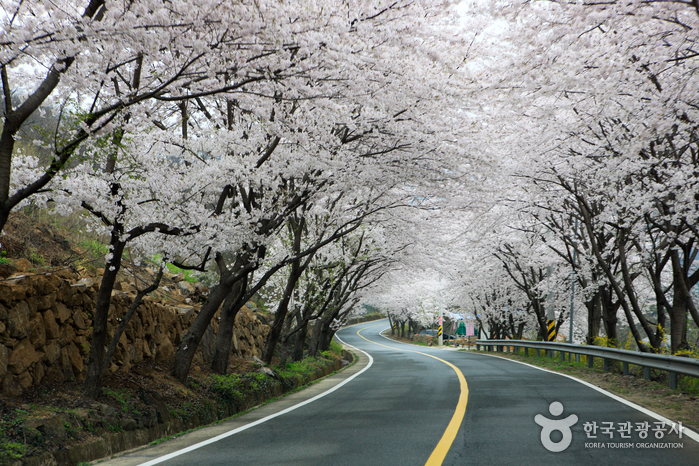
![Myeongpum Hadong Green Tea [Tax Refund Shop] (명품하동녹차)](http://tong.visitkorea.or.kr/cms/resource/93/2886293_image2_1.jpg)

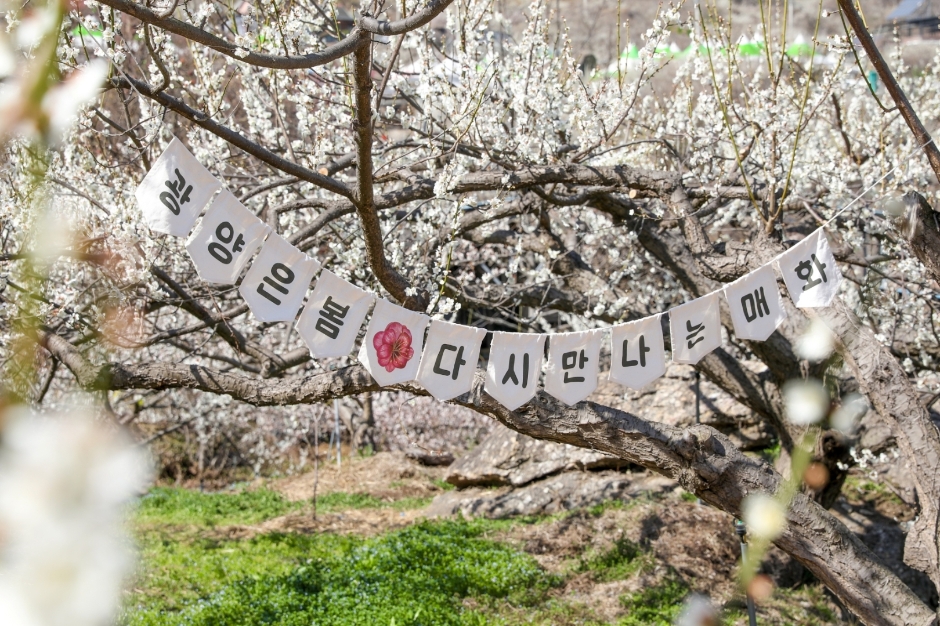
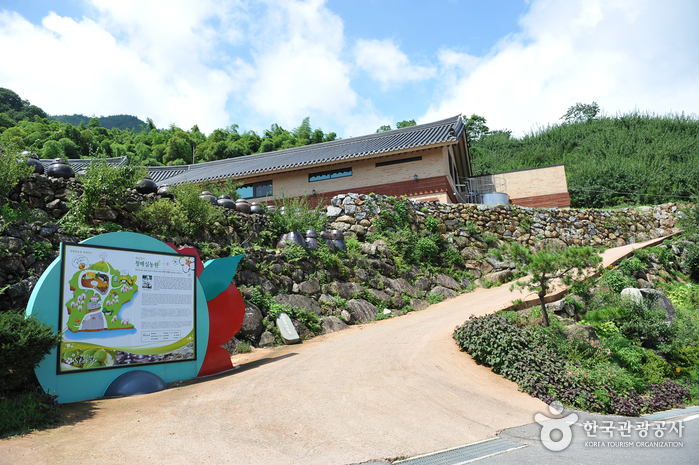
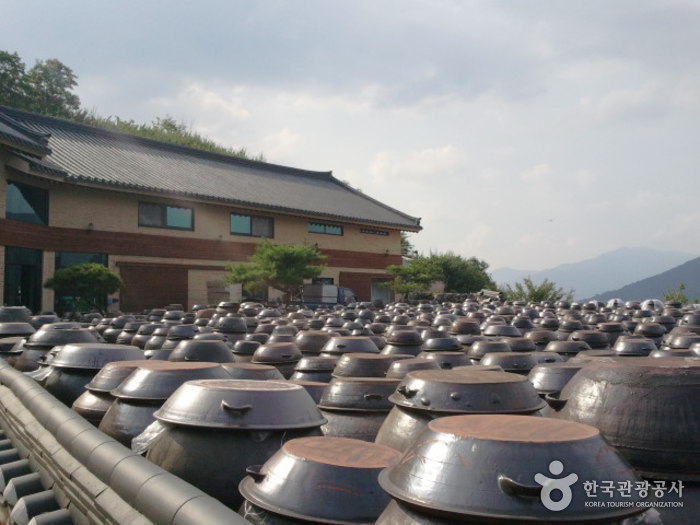
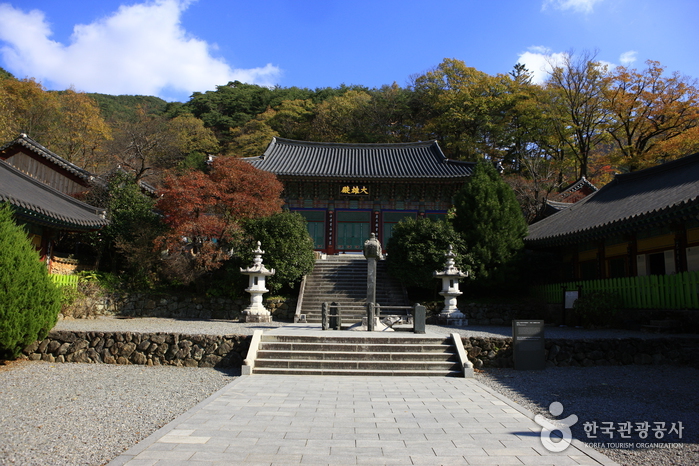
 English
English
 한국어
한국어 日本語
日本語 中文(简体)
中文(简体) Deutsch
Deutsch Français
Français Español
Español Русский
Русский